How to socialize your puppy is crucial in your future dogs’ ability to function in this modern world, so let’s explore it.
Socialisation is the term that covers a lot of different processes, but the point of socialization is to help puppies become dogs who function comfortably, and confidently as a member of your family, and society.
It is a process of learning, a process of deliberate teaching, but overall it’s a slow, positive exposure to the world in order to avoid experiencing stress, anxiety or other less desirable reactions to strange things in the future.
There are natural times in a puppy’s development where they are confident and where they are less confident.
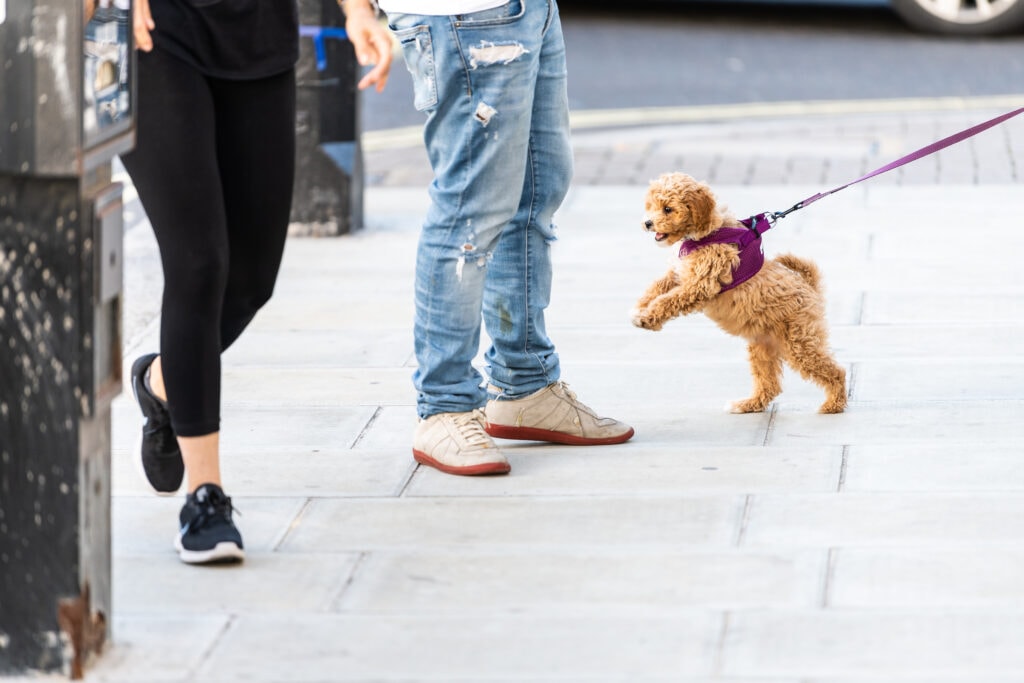
Puppies come into our world with a readiness to be social creatures, and to engage with humans (luckily for us!).
Now let’s be under no illusion. Our world? Is an incredibly complex world far withdrawn from nature. Where human made things takes up 55% of the world’s mass – is it any surprise that our puppies (and us, by proxy) have a monolithic task ahead of them?
Socialisation is also a long, drawn-out process and in some respects can continue throughout our whole lifetime: for example when adults find themselves interacting with people from unfamiliar cultures. Even when we join a new social group in our own culture there may be a need to adjust to new ways of behaving.
Socilization Is Quality Over Quantity
I want to preface this conversation with this statement. Socialization is really important, but, it is always a case that 1 quality experience is greater than 5 poor experiences. This means that you need to focus on creating good experiences every time your puppy interacts with something new.
You can do that with treats, with play, or by praise and encouragement.
Socialization FAQ…
I won’t be including the FAQ in this document, this is the mechanics of socializing your puppy questions (whilst likely touched upon in this piece) is in a separate post, or we’d be looking at a very long blog post!
Questions in the Socializing FAQ Include:
What Is Socialization?
Why Is Socialization Important For Puppies?
Are Puppy Socialization Classes Safe?
What Vaccinations Does My Puppy Need Before Meeting Other Dogs?
What Age Should I Start Socializing My Puppy?
and 7 others that new puppy parents often ask me
Socialization & Brain Development
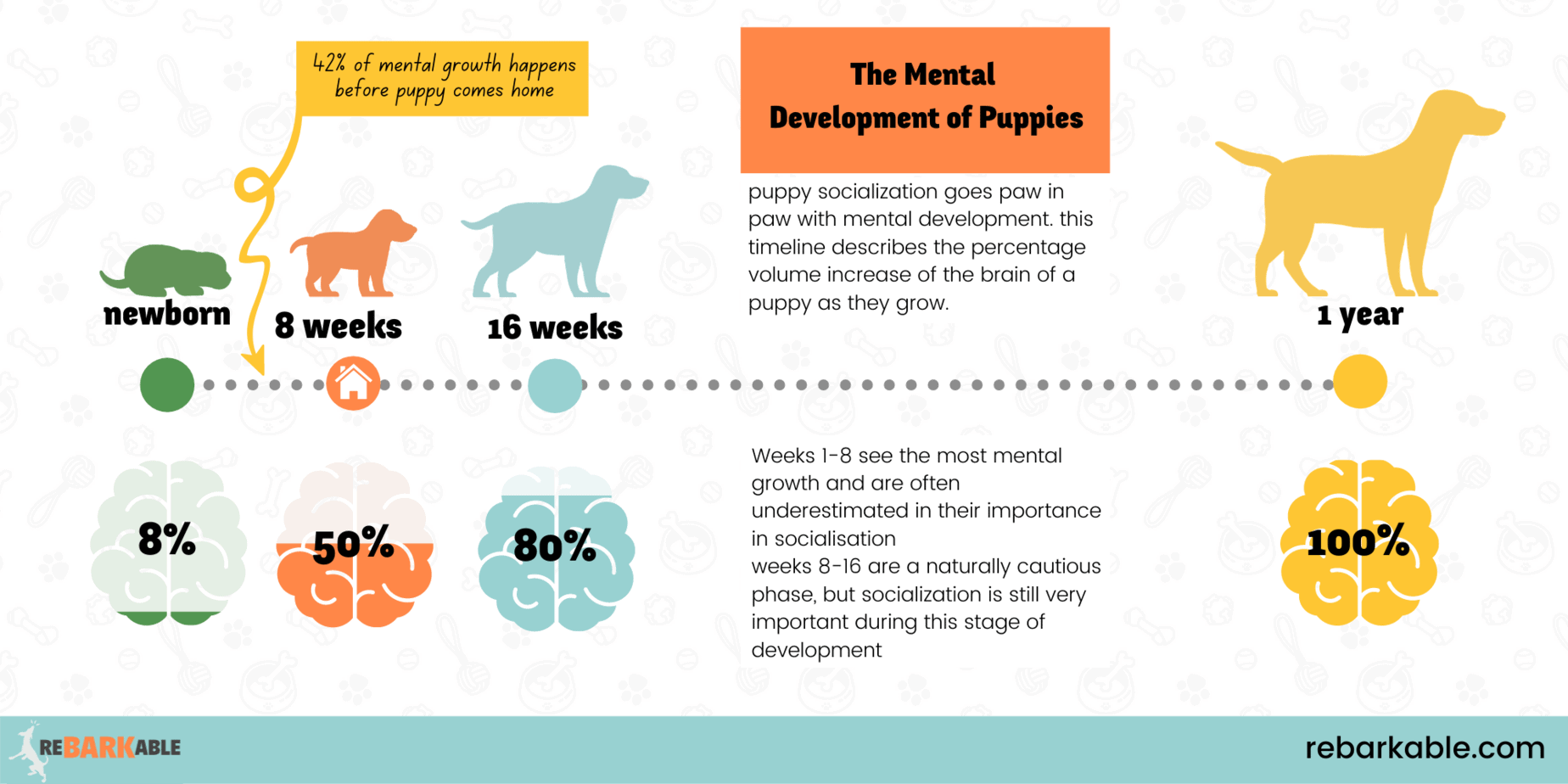
Mental development is a very interesting thing in puppies. It is a really important aspect of understanding socialization to it’s fullest, because your puppy’s brain is developing so fast – it multiplies it’s size by a factor of six in 8 weeks… that’s approximately taking something the size of a golf ball? And growing it into a softball. I mean whoa!
So, it becomes our responsibility (me as trainer, you as awesome puppy parent) to socialize your puppy, and fill this space with the equipment your puppy will need to thrive in their life with you. We are trying to mold them, shape them into a dog who is confident, capable and adaptable, and doesn’t care what life throws at them!
Socialization is what prepares them for the world, it is how they know good things from bad things, and what they should and shouldn’t be cautious of. i.e. be cautious of fire, because it’s hot – but my parent is awesome and I love them!
Because puppy brains are growing really rapidly between being a newborn and being 8 weeks of age and coming home, things that they will normally learn naturally in this time:
- Flight Distance
- Species Recognition
- Social Bonds with humans, dogs and family members
- Building blocks of the adult they’ll become
But that doesn’t have to be all. The beauty of this phase is that pretty much everything they experience in this early stage will be accepted as entirely normal. And that element of Socialization is done.
Dr Kathryn Lord has a great video on early socialization if you’re a total nerd like me and want to check it out on youtube.
A Note
This may need some adaptation to your situation. This is structured this socialization explanation the premise that puppy comes home at week 8. This may not be the case if you have rescued (thank you!) or if you’re bringing puppy home at a different age? Then you may need to modify this as appropriate – or get in touch and we can work up a custom plan together.
Socialization With The Breeder
Newborn to Week 4
Their senses are just forming, so we have to be considerate that their senses may not be inclined towards sights and sounds until about week 2, and even then they’re not clear, just light and dark, loud and soft, everything is still very indistinct until about week 4.
Whilst puppies cannot hear or see, they are born with touch and with smell. So stimulating these senses a little could be an idea for socialization!
That said, we don’t want to ignore this period of what could be great development time.
So, try playing sounds, introducing light and dark and handling (gently) but frequently.
You may even want to try the radio! Having different voices is also great for young puppy ears! Though do be careful, or puppy might think they’re going home with Greg James on BBC Radio 1 (Yes I’m a Brit at heart!).
Week 4 to Week 8
At this stage, the puppies are growing fast and they are beginning to show personality. This is one of the fun bits!
But this is also when your breeder should be upping their game with them.
Plastic trays can be introduced to walk on, bubble wrap, new surfaces like carpet, tile and grass, then other things like ice or warm water. New smells like roast chicken, or oil, perfume or pine cones.
Sounds are great too, think about using the playlist above, or asking if it can be tailored depending on your environment! So, for a future city dog, traffic and schools, and roadworks might be a must! Whilst for a dog living on a farm, a train and farm yard noises might be better suited.
Textures are great fun too include. Carpet, sand, water, and then novel surfaces, things to wander over, through, wobble on, under, climb and generally to try and keep your puppy challenged! Sometimes you may have to think outside of the box.
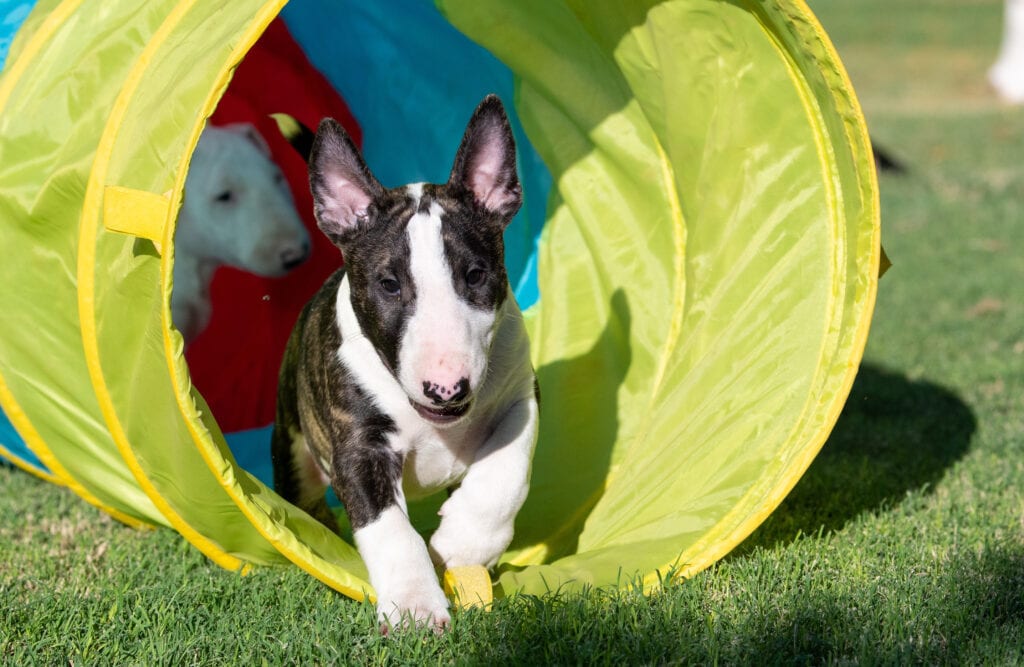
Your breeder may also elect to take puppy outside, into the real world, in their arms, a stroller, or in a specially made puppy sling in order to have them experience more of the world.
But it’s important that your breeder considers your lifestyle in this. There’s no point in habituating your puppy to life on a barge if they’re going to be living in a town!
Then there’s things like crate training! Introducing puppy to their bed or crate before they come home whilst they’re confident with siblings, is a great way to help smooth over the transition from adoring breeder to loving home.
What About Socialization With Me?
You’re really important in this equation.
Make an effort to visit puppy before you take them home, preferably twice (if not more), once to introduce yourselves, and then another to introduce the car or vehicle they’ll be going home with. If you have another pet, it might even be a good idea to bring them (so long as they’re fully up to date on their vaccines!) But as always, the more exposure time they have to you is going to result in a better experience overall and integration into your home.
But How Can I Affect How My Breeder Socializes My Puppy?
My dear puppy parent, I hear your calls! It’s a great question, how do you do that?
Well, by having an awareness that it needs to happen, and that you only select a breeder who is willing to work with you on this. This is how we set out pups up for success in the future, and how we better the industry on the whole, okay? So please don’t compromise for the sake of bringing a puppy home now.
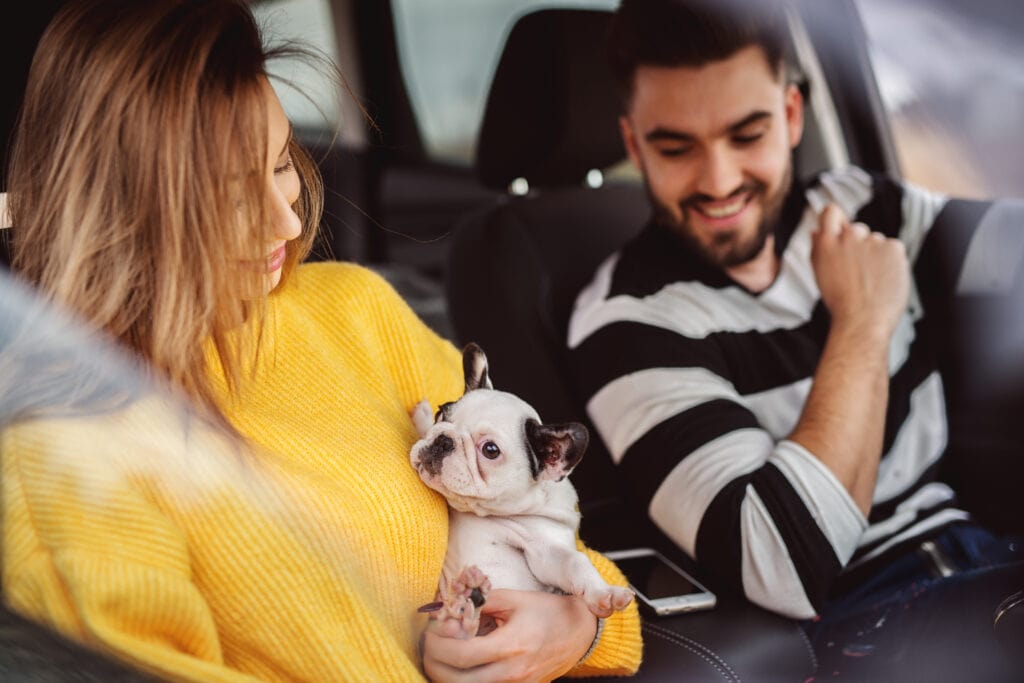
Transitioning From Breeder To Home.
Providing the breeder with a lot of your puppy stuff can help puppy to ‘socialize’ with them and get used to them before puppy comes home, which should make the transition less steep than some puppies face.
This plays on the idea that dogs can leverage familiarity.
Socialization & Familiarity
The pairing of familiar things with new or scary things can help a domestic dog puppy overcome that fear.
This is something we lean on with taking a blanket that smells like their mother, or introducing items that they will know in their new home, like a collar, bed, or a set of bowls – as well as introducing yourself several times.
You’re crafting familiarity between you both, so that when puppy comes home? He or she can lean on that and hopefully, ease puppy into their new home.
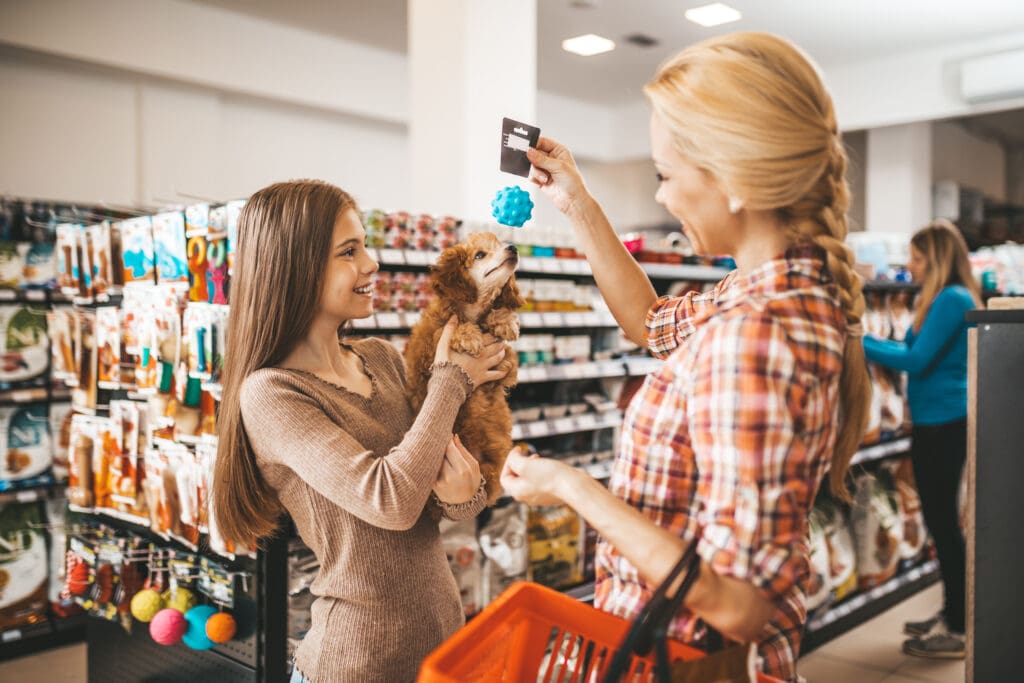
How To Socialize Your Puppy
I’m going to divide this into three main sections because your approach should be slightly different in each of these phases – though again remember each dog is an individual and these are guidelines! Your puppy may vary.
Stimulate The Senses.
Dogs and puppies, like us, have 5 senses (technically 6, they definitely have a special Cheese packet sense – whilst not scientifically proven, I’ve seen it in action maaaany times). Considering these is a great way to think about socialization.
Taste
Think about introducing your dog and puppy to different tastes and textures. Smooth, crunchy, soft and hard. It’s a wonderful excuse to test out a whole bunch of treats and see what your puppy prefers for working out what your High Value Treats might be.
Consider something like Bone broth to try too, and Kongs can be great for this too.
Do try to remember that your puppy cannot eat everything you do. This list from the ASPCA is great to remember what they shouldn’t be eating.
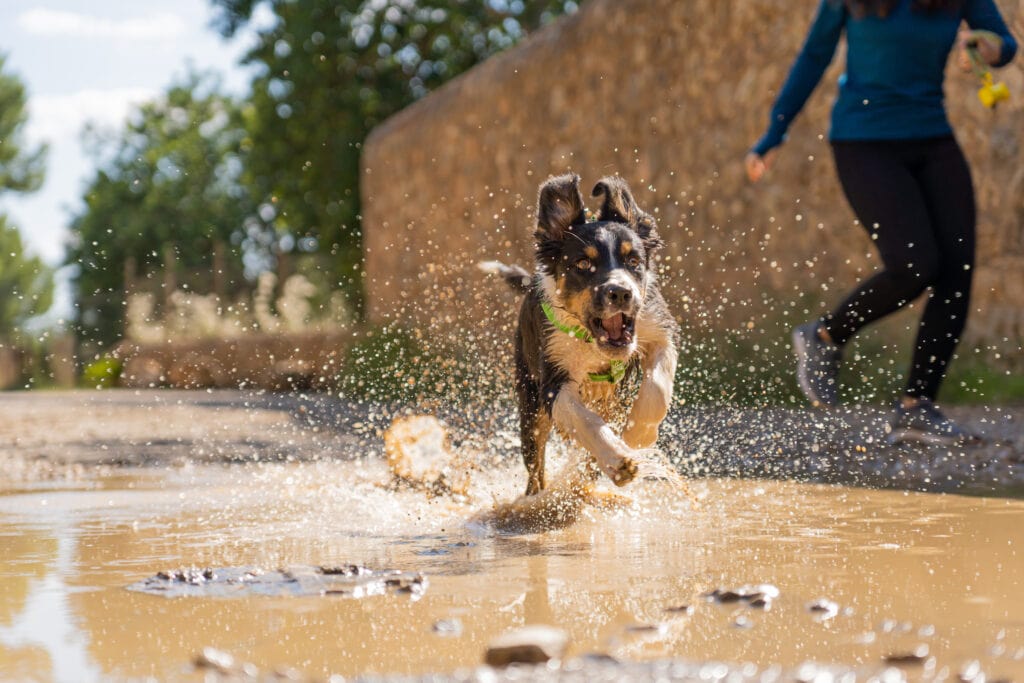
Touch
Touch is huge. Surfaces with their paws is a surprisingly large issue that gets exposed when dogs get older. Whether it’s a case that you move to a new home, or they stay with a friend, they may be introduced to a wood floor, or tiled flooring. And suddenly your dog won’t go in the kitchen and you cannot figure out why…
So doing this is really important. And don’t forget letting them get to stand in water!
Hearing
A dogs ears are very important! Fireworks, thunder, roadworks, bikes, harley davidsons, and then some massively more common things like TV’s, the steam from the iron, the vacuum cleaner and dishes clanking together.
Depending on what is going to be heard where you live, or where you might be going for vacations, hiking or similar. (remember, over socializing to sound is not a problem so long as they’re all positive experiences) So as many experiences as possible
Sight
Seeing all sorts of people, sizes, shapes, ages. Wearing hats, high viz, in heels, in boots. Seeing cows, chickens, goats, rabbits, the inside of stores! Car parks, the veterinary office. People in uniform! Cars, trucks, vans… Do you see? There’s so much too for them to visually get used to, that even a normal day for you can be a wonderfully stimulating day full of new experiences for puppy.
Just remember, that dogs aren’t colour blind! They can see in shades of blue and yellow.
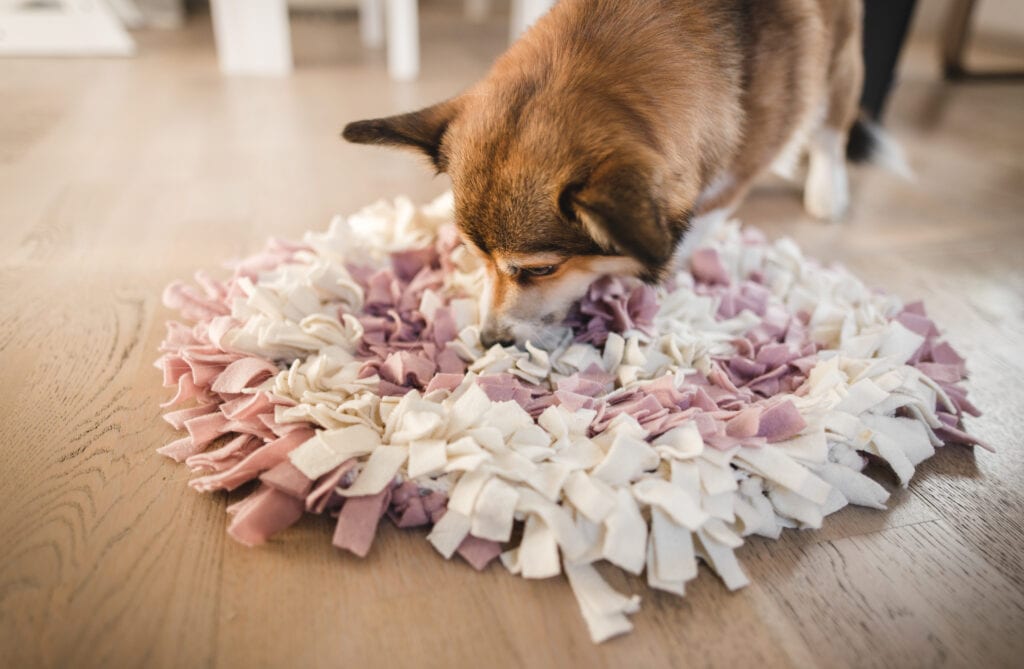
Smell
The olfactory sense in dogs? Is forty times the size of that in humans…
Dogs pretty much see in scent.
Which means that we have to pay close attention to a sense that we have no idea about. This is why I will always say?
Let them sniff.
Honestly. You will be putting them into a whole bunch of situations when you’re socializing for the other senses, just remember not to rush them. The more they smell? The more they will recognise in the future. This one is the biggest drivers for your dogs, so please remember that.
Week 8 to Week 16
This is often referred to as the First Fear Phase. You may notice hesitancy starting to creep in and they may be reluctant to interact with new things.
This is really poorly timed, to be honest, especially given this is when most puppies come home for the first time. Talk about preying on fear!

Now, some breeds get away with this a little easier. For example labradors have had observed differences in their fear period starting later than German Shepherd puppies – with almost a week difference. That difference would help greatly into helping a dog settle into their new home, wouldn’t it?
Still! If you’ve done the groundwork, and your breeder has been obliging, there is no reason that this cannot happen successfully, and that you can leverage this.
I would suggest repeating some of the socialization that the breeder has done, and beginning to socialize gradually (remembering quality over quantity from above!) and gradually working them through what they should be experiencing.
Monkey-See, Monkey-Do
It’s that moment where you walk over to the scary thing, perhaps a creaky door, or garden gnome (creepy as they are) and touch it yourself, demonstrating to puppy that look, it’s okay buddy, it’s not scary… see?
This follows a little bit of monkey-see monkey-do behaviour found in children, but it works just as well in puppy development too – so don’t underestimate the power of that either!
Include handling
Please make sure that in this whole process? That you’re including handling. My sure puppy is happy to be held, that you can touch every part of them (yes, every part) because if the vet or groomer ever needs to touch those parts you need to make sure it’s not strange or weird for them as much as possible.
Paws are often overlooked, but introducing claw clippers or grinders regularly is great practice and shouldn’t be overlooked.
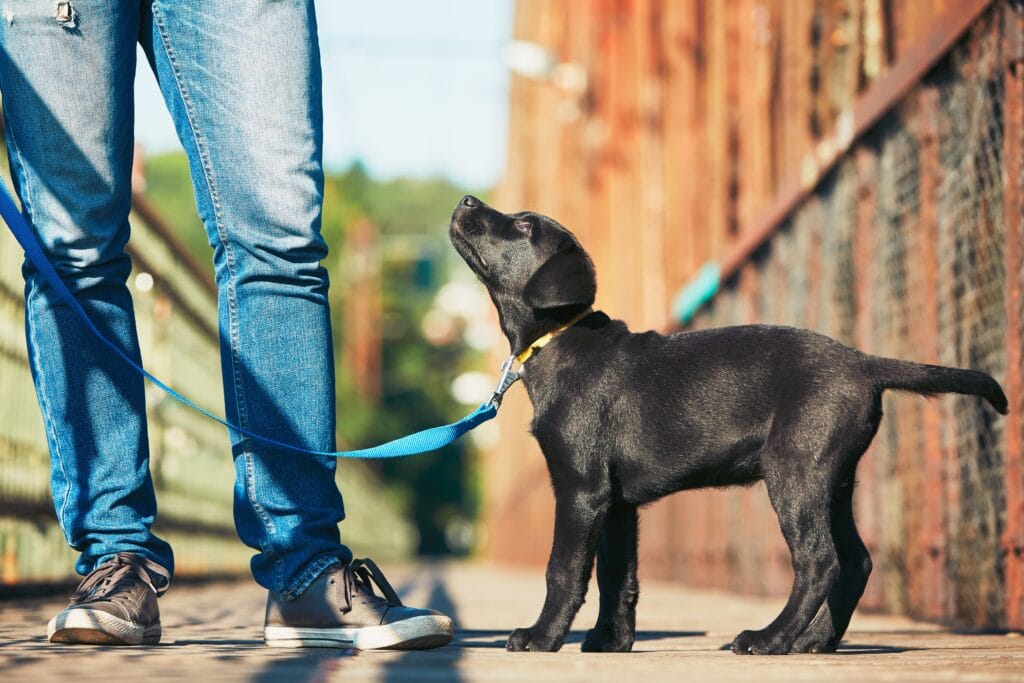
Week 16 to Week 24
(this will be more than 8 weeks in a lot of large breeds and may go all the way until week 48 or even 52)
This follows a very similar pattern, as your dog is growing they’re teething, they’re learning, they’re having a lot of fun and keeping you on your toes. But, generally, socialization is very much the same throughout, with the exception that you’re now going to create value, or craft a positive response.
How do you do that? Sometimes you do it by rewarding your dog to create a desired response. Remember when I said about high value treats? This is where you may need these. You can work on the monkey-see, monkey-do method (above), but having treats handy can help you get into a habit for the next phase of development (dun-dun-duuuuuuun!)
It’s usually around now that your puppy’s vaccinations are complete so you can start including other dogs (see below because that’s a lot of info!!)
Week 24 to Week 52 (or more)
(this may vary in it’s beginning, small dogs tend to experience this earlier than larger dogs, who may experience this all the way up to 1 year of age)
This is the Second Fear Phase.
Similarly to the first fear phase? Your puppy will now show a new found hesitancy, a wavering in their confidence. Something new might be something they growl at, or (if they’re like indie) they’ll plaster themselves against your legs and look at you a little wide eyed.
When this happens? You’re going to want to take note. Walk away, give them some space (this is monitoring the 3D’s to give confidence) and try to approach again – but at your puppy’s pace. Remember your praise and reward for your puppy being brave, and if they don’t get there? That’s okay, this time may not be a success, but the next time will get you closer.
Now, if you haven’t before is a great time to brush up on your canine body language. If you need reference, have a look at my post on play, and have a read of Lili Chin’s Doggie Language (Truly fantastic!) which will help you identify when your pup is feeling uncomfortable and allow you to respond appropriately. Sometimes fear is a little more subtle in it’s expression than you may think, and if you have a breed who downplays their emotions (like an akita) then you really will have to become adept at watching, and reading those incredibly subtle cues.
Remember! We never scold a scared dog, (or any dog) because they are scared and doing so will reinforce that they were right to be scared, because the new thing, person, or whatever makes you angry. And that’s the association they’re most likely to make.
Dealing with fear takes time, and it takes encouragement, which I know will make the world of difference.
Year 1 onwards.
Similarly to what happens in the fear phase? Because most of your developmental things have been completed, it depends on how averse your dog is to the new experience. Is it a case that the weird buzzing from the new air conditioner makes him bark incessantly at the device? Or is it more that she would rather walk around a puddle than through it?
Either way, some of them aren’t as necessary as others to “deal with”, and sometimes, accepting who your dog is? Is fine.
But for the more debilitating, it’s a case of looking into counter conditioning and desensitisation. It’s a similar process to that of reactivity, but changing the “trigger” from another dog, to a thunderstorm, or fireworks, or a truck! The principles are very similar, but if you’re ever stuck, please do reach out!

Socializing With Other Dogs
This is one of the parts that people look forward to the most. It’s really one of the most rewarding things to see your dog make friends, play nicely, and work out all that energy in a way he or she just cannot do with you. They can run at dog speed, they can play at dog force (which, if you have a big dog, is a lot more than we’re comfortable with, let me tell you!) and it allows them to take the safety off a little.
I will encourage you to:
✅ Ace your pups recall (as best you can) before this happens and/or consider a harness and long line.
✅ Complete all vaccinations
✅ Watch the other dogs play before throwing your puppy in
✅ Pick a quiet moment to introduce, don’t expect them to go in at the deep end.
✅ Be your pups’ best advocate!
Make sure you look out for them, keep the play short whilst you’re finding your paws together, and don’t let him get too deep.
A Common thing you’ll hear is “Oh, don’t worry, they’ll sort it out”. That… doesn’t really happen? It’s a misnomer that gets perpetuated. Essentially, your puppy is learning to increase their social skills. This is the equivalent of learning to talk politely as a child. And, whether you remember an incident as a child, or know how brutal kids can be with their honesty? Your puppy will be the same with their play.
The other dog may give signals saying that someone needs to calm down, but your puppy may not realise that, which will cause the other dog to escalate their response. It’s good for you to step in at this stage and halt play before it potentially escalates to the point where this will rack up a point on the “Other Dogs Are Scary” Scoreboard, as opposed to “Other Dogs Are Fun”
Remember, play is only fun whilst both dogs are playing in a balanced manner. You should see older dogs, larger dogs etc hampering themselves to make them more accessible for your puppy (especially whilst they’re small) and not using their full force or weight. IF you’re unsure what balanced play looks like? This may give you a great idea.
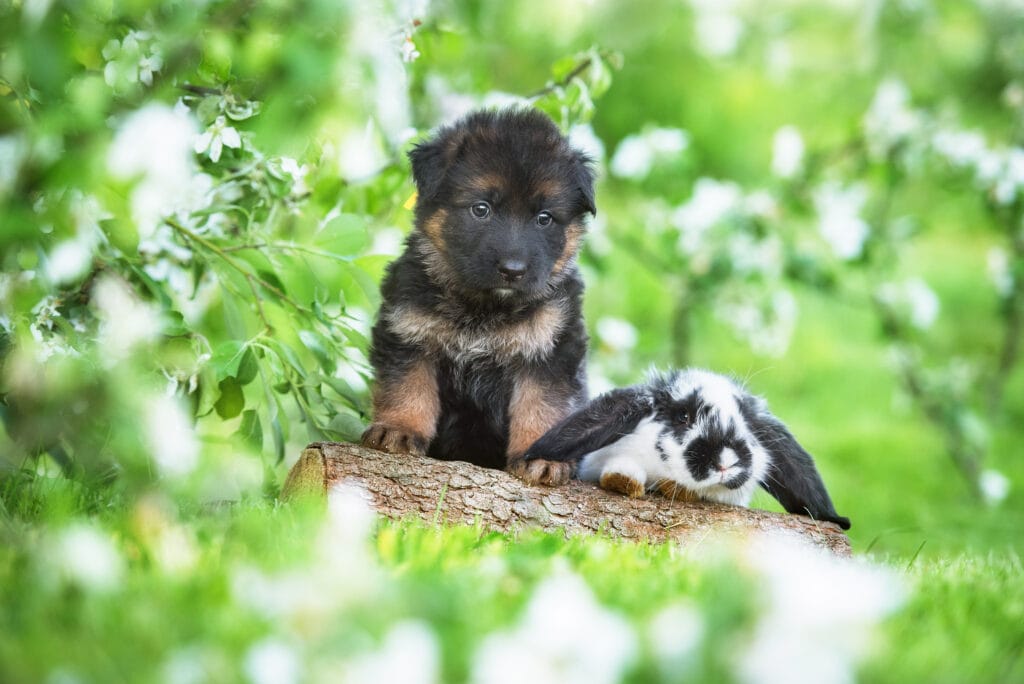
Socializing with Cats, Rabbits And Other Small Fluffies
Depending on the breed of your dog, they may be a high prey drive dog.
High prey drive dogs tend to be tougher than low prey drive with smaller animals, because their natural instincts drive them to herd, chase, hunt, or sometimes even dispatch (this is known as the predatory Motor Pattern! And can and should be used for considered enrichment).
But that’s not what you want, really, when you’re introducing puppy to family pets.
This is slightly different, because it’s within the home, and I’ll go into it in more depth in another post, but the essence is similar to that of when dogs play, don’t let it go too far. Reward and praise for appropriate behaviour, and don’t allow bad behaviour to happen — set them up for success. I.e. if your puppy wants to chase the cat because chasing the cat is fun, keep puppy on a leash for interactions with the cat, and don’t let that happen.
Be more rewarding than the fun puppy isn’t having, and suddenly, puppy will realise the cat is more rewarding when he’s not chasing it around the house like a crazy scene out of Tom & Jerry.
Remember, You Will Forget Something (Ironically)
Yep. It’s really ironic, but you will forget something, or, something will change that requires a new type of socialization you never thought was going to be relevant. Or, in a few years (hopefully many) will rear it’s head like “Ohhhh, he has no idea what a cattle grate is…” or “Oh wow, she’s never been in an elevator, has she?” But trying to figure these things out ahead of time, and working on socializing them (gently) with it, is a great idea.
This is a lot like what I did when I had to bring Indie on a plane from the UK to the US – I went to a small, local airport that I knew would be quiet, and we walked it, around, down, up escalators, down elevators, and sat as close as physically possible to a plane taking off.
Whilst I couldn’t simulate the cabin? I knew that the noises the plan was going to make were going to be one of the most significant things, so that’s a good chunk of what we worked on!
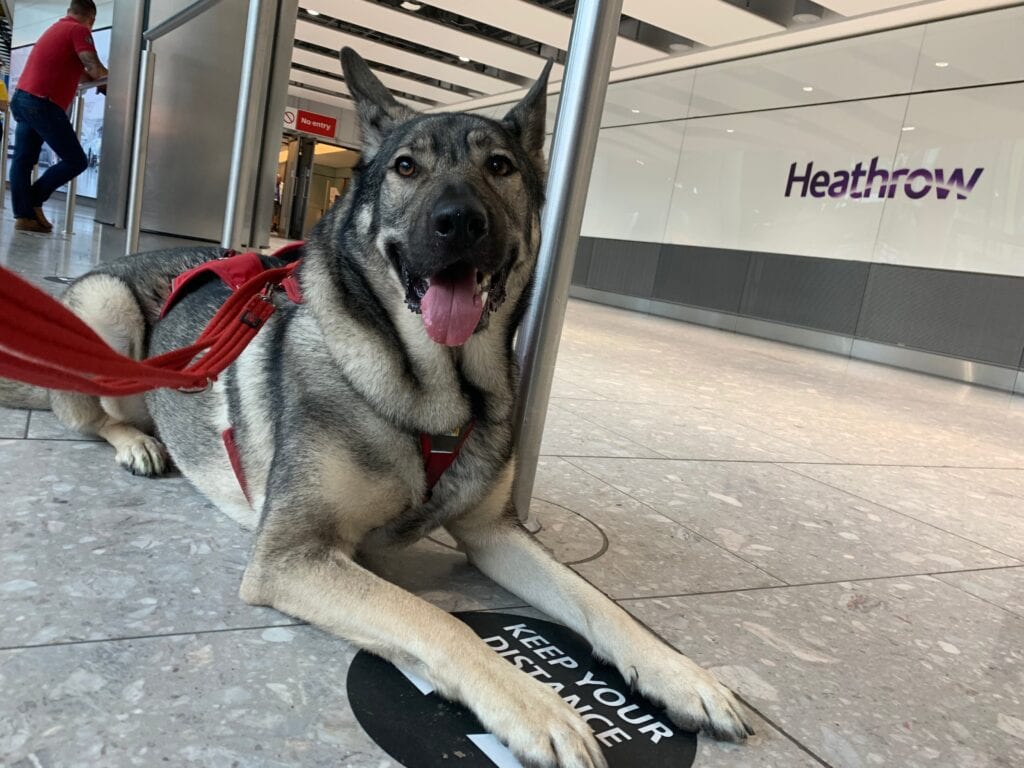
Key Skill: Patience
Rushing socialization will not get you the results you are looking for (without sounding too much like Obi Wan, “These aren’t the droids you’re looking for”), instead it will only result in poor socialization and likely bad experiences that you’re going to have to work harder to do in the future.
Yes, bad things will happen that are out of your control, the way I see it, you can either run from it or learn from it (and now I’m Rafiki, holy moly…). Next time? Learn from it, apply your knowledge and skill and you’ll get there. And if you’re not making progress? Well, that’s what I’m here for, isn’t it?
So, slow it down, take a break if you need to, and go at your puppy’s pace.
A Lot Of Socialization Happens Organically.
This is a good thing to remember throughout. That sometimes you don’t need to focus on continuous exposure to new things, sometimes it just happens. Like the day puppy comes home? That day is packed with a whole new world (Dammit, now I’m in Aladdin, I need to get out of these Disney franchise quotes!) to learn, sniff, smell, see, listen to and experience – for the first few days, your home will provide that.
So will the vets office.
So will the first visit to the park – new dogs or not.
You can do a lot of this without trying. But, it’s good to have a recognition that this is a wonderful phase of development, mentally, for your puppy, and that you should take advantage of it whilst it’s easier for you. Okay?
Sounds To Me Like You Know How To Socialize Your Puppy!
Right? You’re there with me huh?
Now, I know you’re going to have questions, because whilst this is pretty in depth, I am aware I’m missing things in here, and that some of the answers are a little buried. So, there will be an FAQ appearing soon that you might be interested in.
In the mean time, I wish you an abundance of luck, keep me posted on your progress in the comments, or let me know if there are any questions you desperately need answered and let’s see what we can do!

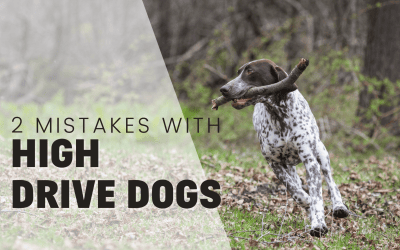
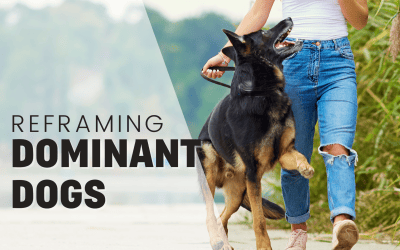
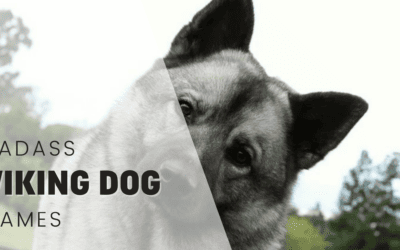
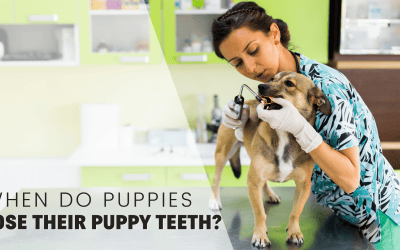
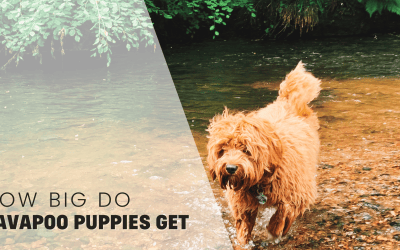
My sister in law just adopted a new puppy and I will be sharing all this information with her, the puppy has too much energy, lol
It might be the case that puppy is overtired! They need a surprising amount of sleep, check this out https://rebarkable.com/overtired-puppy/
I just realized why puppies in my mom-in-law always tries to bother me, they really love to socialize haha
Hey, we’ve all gotten a little stir crazy over lockdown! I can’t blame them really.
I love puppies! Your right, they need to be properly socialized so they can also enjoy the best life possible. You have given a lot of great information here.
My kids are aksing for puppy. However I am turning it down, as they are more work for me. This is great information I will keep in mind.
They’re definitely a lot of work – but the year of hard work and a little maintenance can be great in creating the ‘easy’ kid in the house!
These are really awesome ideas. it is so important to do this when they are puppies.
definitely! Especially when you consider how much their brain grows in this time!
This is great information to know if I decide to get a puppy.
I have finally accepted the fact that I have to be deliberate about his socialization. Its really important
Our son would love to have a dog. We might get him one soon. Thank you for all the tips.
Here when you need me!
I’m hoping to get a puppy when we move to a bigger place. I’ve never owned a dog before but have friends that do. It was interesting to read the section about socialising your dog. I’ve heard they don’t tend to like fireworks.
I sometimes find it hard to let our dogs socialize when they were puppies. I have reservations with regard to the safety of other people and dogs because puppies can be hard to manage at times. Anyway, I’ll try your tips next time.
We have two shih tzus. One 8 year old and one 11 months old. It was difficult having them together at first, and we were extra careful introducing the puppy to our older dog. I guess they learned to like each other early on. Now they are inseparable!
We’ve owned many dogs over our years, and I could have used an article like this early on. We were lucky in that we tried to treat them like we would our own kids, talking, snuggling, petting, introducing them to other dogs and cats carefully. We’ve loved each and every one of them so much!
Aww…I’ve been wanting to have one but for some reason, I can’t. I will definitely share this information with my friends who have puppies.
I like that this is broken down by the age of the dog. That way I can train my dog when they are ready.
I needed this info! Our dog is super playful but can’t be around other dogs because she comes off as aggressive.
So sweet. My daughter wants a puppy, but I told her she has to settle for cats. This is some helpful info for those with a puppy! I’ll direct some friends to this post.
I think somewhere along the line I failed with my dog because he wants to fight all dogs he sees or hears. I wish I could socialize him in a better way
Oh Melissa! I’m sorry, have you checked out our post on reactivity? It sounds like that’s what you’re struggling with